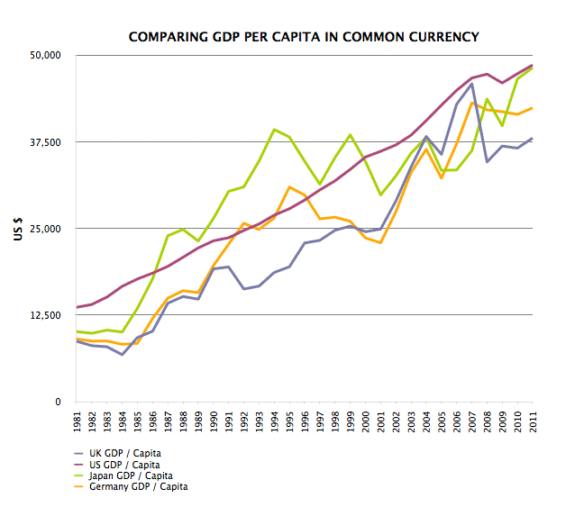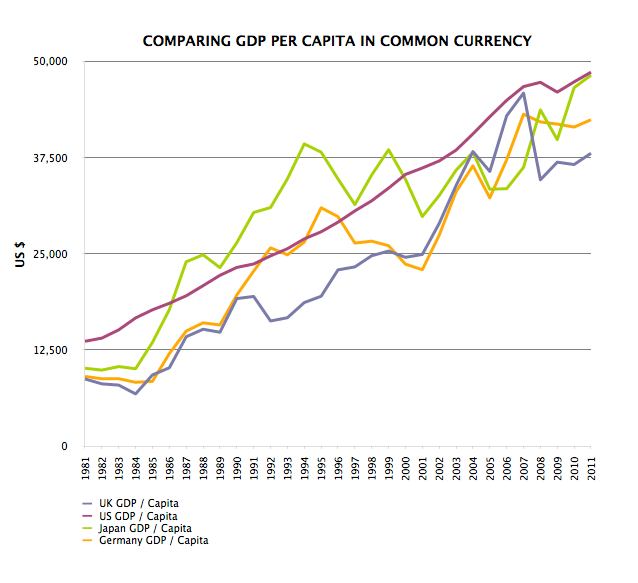
GDP

Share
Imagine the US economy shrinking by 30% over the past four years, the Chinese economy growing at 2%, not 10%. Imagine UK house prices down 60% and commodity prices sliding back to the levels of the mid-1970s.
Share
Sovereign downgrade? Been there, done that, got the T-shirt. Such is likely to be the response of any investor in Japan to the news that Standard and Poors has removed its triple A rating on US
Share
The world has come to think of Japan as the economic equivalent of Duran Duran – an over-hyped 1980s phenomenon that has fallen into justly deserved obscurity.
Share
How much more “emerging” have the emerging markets left to do? Probably not much, given the vast amount of capital and hope invested in the asset class already.
Share
“When my mother was 10, she was evacuated to Sendai and saw the whole town get bombed flat. My father experienced the big air-raids on Yokohama. Their generation started out when there was nothing left of Japan but smoking ruins. Don’t worry about us – we’ll definitely recover this time too.”
Share
“What most likely happened was pedal misapplication.” So concluded an official of the National Highway Traffic Safety Administration, the US body which has just published its report on the spate of accidents involving Toyota cars.
Share
S&P’s downgrade of Japan’s credit-rating raises a disturbing prospect. Is this stage two of the global credit crisis, featuring chain of sovereign defaults amongst the largest economies?
Share
Who has survived the global credit crisis in the best shape? As Chou En Lai said about the impact of the French Revolution, it’s still too early to judge. The snap verdict that China is the big winner and the US and rest of the old G7 are big losers is already looking questionable.
Share
By orchestrating a massive appreciation of the yen in the mid 1980s, the US condemned Japan to decades of stagnation and ended the challenge to its own economic hegemony. Effectively Japan was forced to commit financial hara-kiri.
